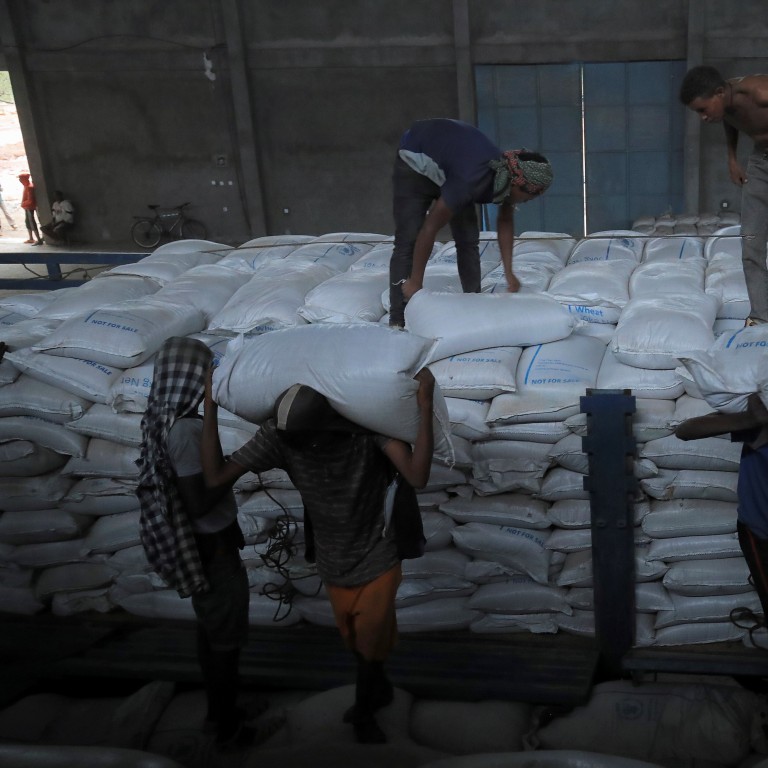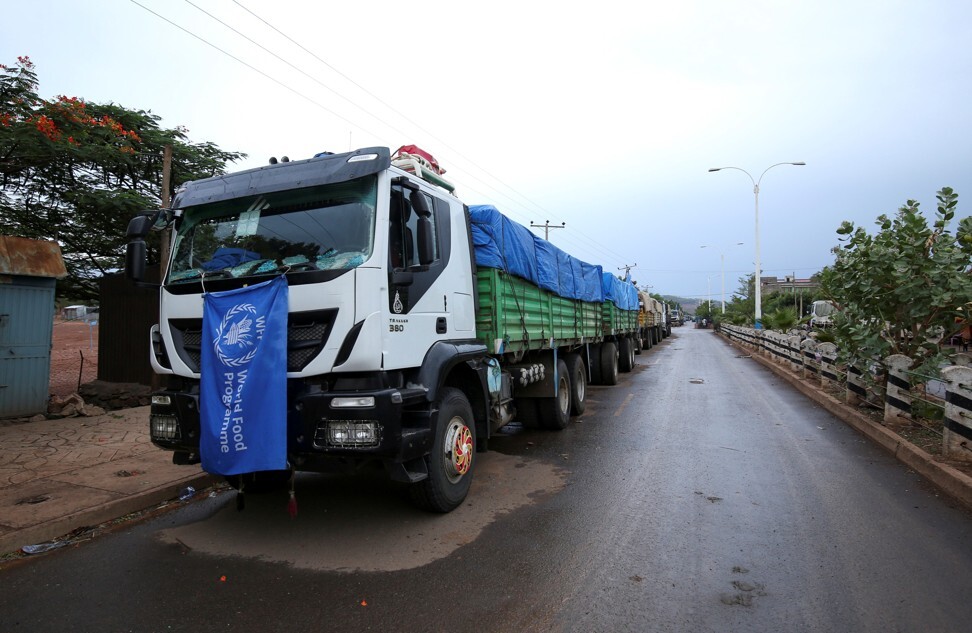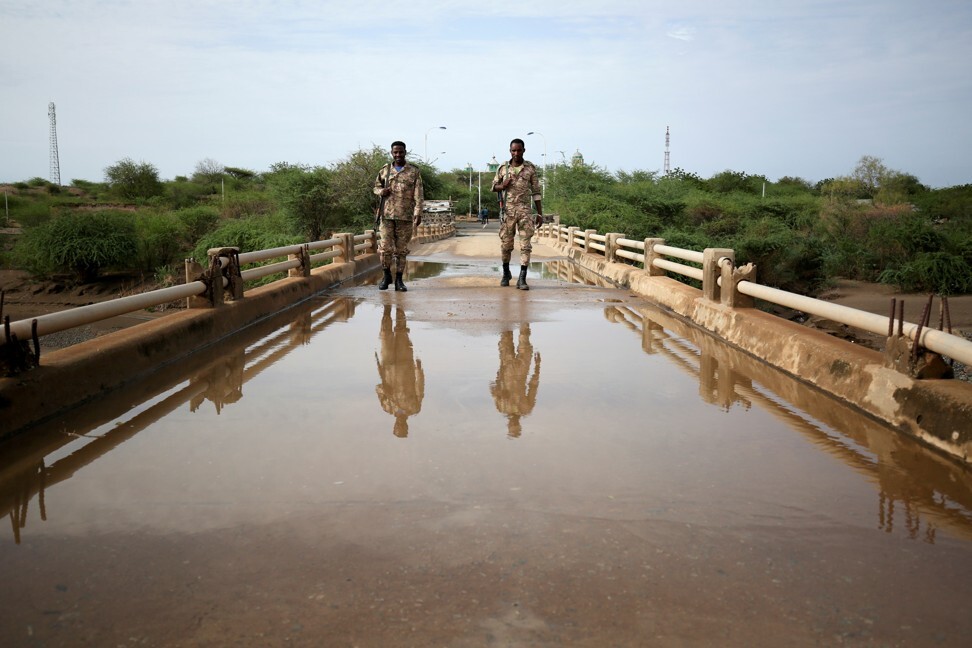
More than 400,000 people in Ethiopia's Tigray region face famine now, UN says
- A further 1.8 million people in the conflict-torn region are also on the brink, the UN Security Council has been told
- Humanitarian access is restricted, with returning Tigray forces not agreeing to a halt to hostilities with the government
The United Nations said on Friday that more than 400,000 people in Ethiopia’s crisis-wracked Tigray region are now facing the worst global famine in decades and 1.8 million are on the brink, and warned that despite the government’s unilateral ceasefire there is serious potential for fighting in western Tigray.
The dire UN reports to the first open meeting of the UN Security Council since the conflict in Tigray began last November painted a devastating picture of a region where humanitarian access is extremely restricted and 5.2 million people need aid. Also, Tigray forces that returned to their capital Mekele after the government’s June 28 ceasefire and exit from the region have not agreed to the halt to hostilities.
UN political chief Rosemary DiCarlo urged the Tigray Defence Force “to endorse the ceasefire immediately and completely”, stressing that the UN’s immediate concern is to get desperately need aid to the region.
Acting UN humanitarian chief Ramesh Rajasingham said the situation in Tigray “has worsened dramatically” in the past two-and-a-half weeks, citing “an alarming rise in food insecurity and hunger due to conflict” with the number of people crossing the threshold to famine increasing from 350,000 to 400,000. With 1.8 million a step away, he said, some suggest “the numbers are even higher”.
“The lives of many of these people depend on our ability to reach them with food, medicine, nutrition supplies and other humanitarian help,” he said. “And we need to reach them now. Not next week. Now.”
The largely agricultural Tigray region of about 6 million people already had a food security problem amid a locust outbreak when Prime Minister Abiy Ahmed on November 4 announced fighting between his forces and those of the defiant regional government. Tigray leaders dominated Ethiopia for almost three decades but were sidelined after Abiy introduced reforms that won him the Nobel Peace Prize in 2019.
No one knows how many thousands of civilians or combatants have been killed. DiCarlo said an estimated 1.7 million people have been displaced from their homes, and more than 60,000 have fled into neighbouring Sudan. Though Abiy declared victory in late November, Ethiopia’s military kept up the offensive with allied fighters from neighbouring Eritrea, a bitter enemy of the now-fugitive officials who once led Tigray, and from the Amhara region near Tigray.
In a stunning turn earlier this week, Ethiopia declared a unilateral ceasefire on humanitarian grounds while retreating from advancing Tigray forces. But the government faces growing international pressure as it continues to cut off the region from the rest of the world.
China welcomes Tigray ceasefire as Ethiopian conflict splits Security Council
DiCarlo said reports indicate that leaders of Tigray’s previous regional administration, including its former president, have returned to the regional capital Mekele, which has no electrical power or internet. “Key infrastructure has been destroyed, and there are no flights entering or leaving the area,” she said.
Elsewhere in Tigray, DiCarlo said, Eritrean forces, who have been accused by witnesses of some of the worst atrocities in the war, have “withdrawn to areas near the border” with Eritrea.
Amhara forces remain in western Tigray, and DiCarlo said the Amhara branch of the ruling Prosperity Party warned in a statement on June 29 that the region’s forces will remain in territory it seized in the west during the conflict.
“In short, there is potential for more confrontations and a swift deterioration in the security situation, which is extremely concerning,” she warned.
Ethiopia’s UN Ambassador, Taye Atske Selassie, told reporters later when asked if Amhara forces would remain in western Tigray, “that is a matter of fact”.
Selassie, who comes from that part of Ethiopia, said the western area was once part of Amhara but was “forcibly incorporated into Tigray in 1990 without any due process”, He said the dispute will now be submitted to a government border commission.
On the humanitarian front, Rajasingham said over the past few days UN teams in Mekelle, Shire and Axum have been able to move out to other places which is “positive”.
The UN now plans to send convoys to difficult-to-reach areas but the UN World Food programme has enough food for only one million people for one month in Mekelle, he said.
“This is a fraction of what we need for the 5.2 million people who need food aid,” the acting aid chief said. “However, we have almost run out of health, water, sanitation and other non-food item kits. Food alone does not avert a famine.”
Rajasingham urged “all armed and security actors” in Tigray to guarantee safe road access for humanitarian workers and supplies, using the fastest and most effective routes.
He expressed alarm at Thursday’s destruction of the Tekeze River bridge – “and the reported damage to two other bridges – which cut a main supply route to bring in food and other life-saving supplies”.
Rajasingham called on the Ethiopian government “to immediately repair these bridges and by doing so help prevent the spread of famine”.
“What we are seeing in Tigray is a protection crisis,” Rajasingham stressed, citing civilian killings during the conflict, and more than 1,200 cases of serious sexual and gender-based violence reported, “with more continuing to emerge.”
Selassie, the Ethiopian ambassador, reiterated the government’s call for a national dialogue and its commitment to ensure accountability for crimes and atrocities committed during the conflict – moves welcomed by UN political chief DiCarlo.
She urged the international community to encourage the government and Tigrayan forces to ensure there is no impunity for the crimes.
The Security Council took no action and made no statement but US Ambassador Linda Thomas-Greenfield said its first open meeting after six closed discussions was important to show the people of Tigray and the parties to the conflict that the UN’s most powerful body is concerned about the issue and closely watching developments.
“And hopefully it will lead to further action by the council if the situation there does not improve,” she said.





